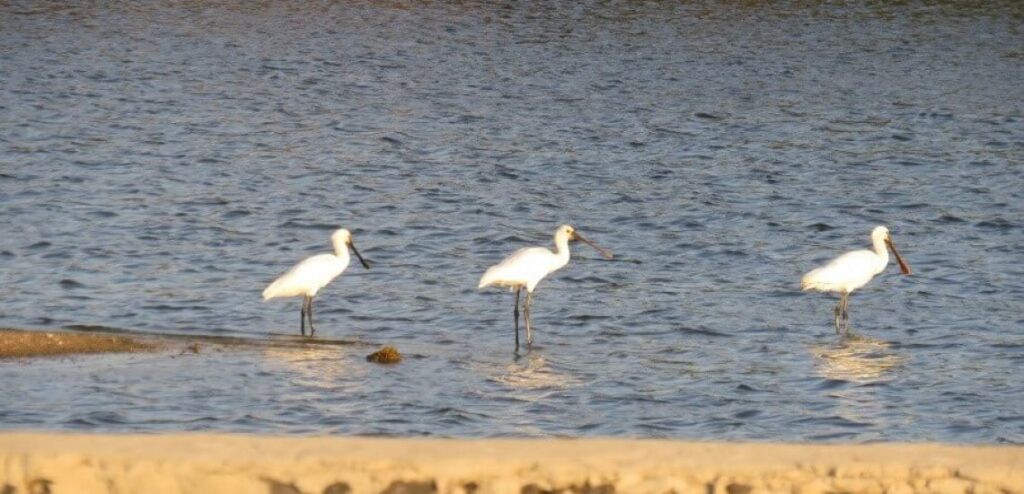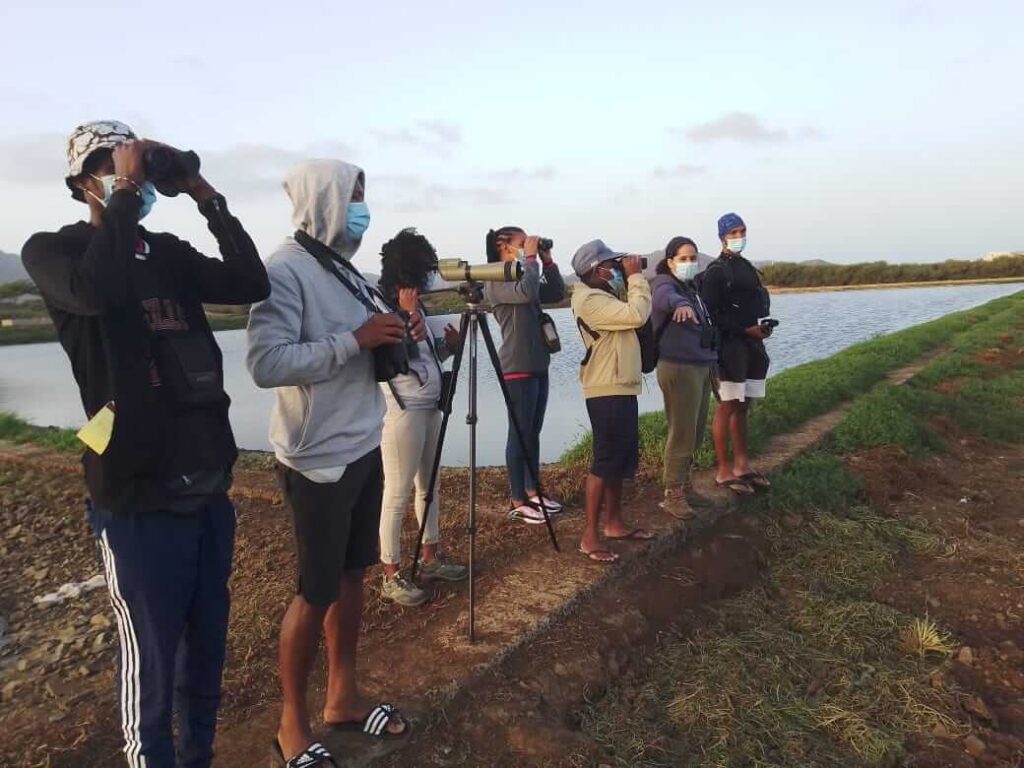Cabo Verde waste water treatment plant is unexpected bird haven

Researchers in Cabo Verde have discovered that a waste water treatment plant is an important stopover site for migrating birds, reminding us that there is still so much left to learn about this African archipelago. Find out how the Biosfera team are working to conserve this artificial wetland.
By Catelene Monteiro, Isabel Fortes & Nathalie Melo, Biosfera
You may be surprised to learn that a waste water treatment plant on the island of São Vicente, Cabo Verde boasts an impressive diversity of bird species, and is a prime spot for watching waders and welcoming migratory birds.
The Ribeira de Vinha waste water treatment plant provides a precious opportunity to observe birds in their natural habitat. Local conservation NGO Biosfera – a member of BirdLife’s Cabo Verde Seabird Project – visits the site weekly to identify and count birds and study their behaviour. They are eager to share the joys of nature and birdwatching with the community, and invite groups including tour guides and students to accompany them. Recently, data collected from these activities has made invaluable contributions to our knowledge of migratory routes.

To date, a total of 40 species of waders and migratory birds have been recorded in this area. The ground nesting Kentish Plover Charadrius alexandrinus already breeds there, and visitors are likely to witness Cattle Egrets Bubulcus ibis, Ruddy Turnstones Arenaria interpres and Black-winged Stilts Himantopus himantopus. Other species appear sporadically and in smaller numbers. Lucky observers may catch a sight of a Bar-tailed Godwit Limosa lapponica (Near Threatened) or Common Redshank Tringa totanus.
Sightings often include those of ringed birds, and spectators can use the unique ring number to find the bird’s origin and follow their migration using dedicated websites. A particularly memorable observation was that of a flock of 25 Glossy Ibis Plegadis falcinellus. With a little help from the white ring on the right leg of one of the birds, researchers learnt that the ibis was ringed in Algeria in May 2020 and spotted soon after in October 2020 by ornithologist António Araújo at the waste water treatment plant. The flock is still present at the site, information made possible by Biosfera’s monitoring work, leading them to believe that the species winters at the waste water treatment plant.
The information provided by rings can also reveal rare, previously unrecorded visitors. Two Sandwich Terns Thalasseus sandvicensis were observed, one of which had a ring on each leg, allowing the researchers to discover that the bird was ringed all the way over in Denmark. The tern was recorded in February and March at the waste water treatment plant, and the ringing entity believe this could be the most westerly recording of the species. These frequent sightings indicate that Cabo Verde is an unknown passage area for birds, where there is still so much to be discovered.
Latest news from Africa
Stay up to date
Sign up to receive the latest bird conservation news. You’ll also receive updates about our projects, science and other ways to get involved including fundraising.
Thank you for your support, we are committed to protecting your personal information and privacy. For more information on how we use your data, please see our Privacy Policy. You can unsubscribe from emails at any time by using the link in the footer of any email from us.




